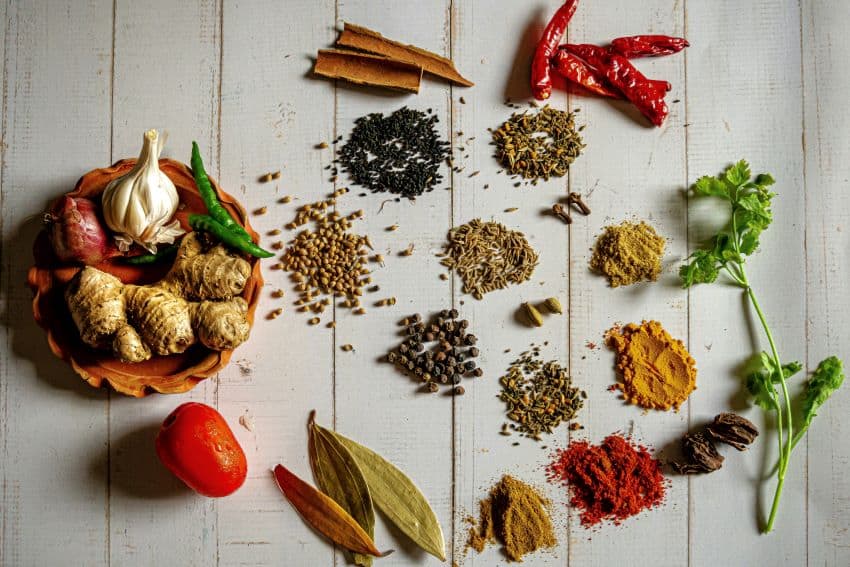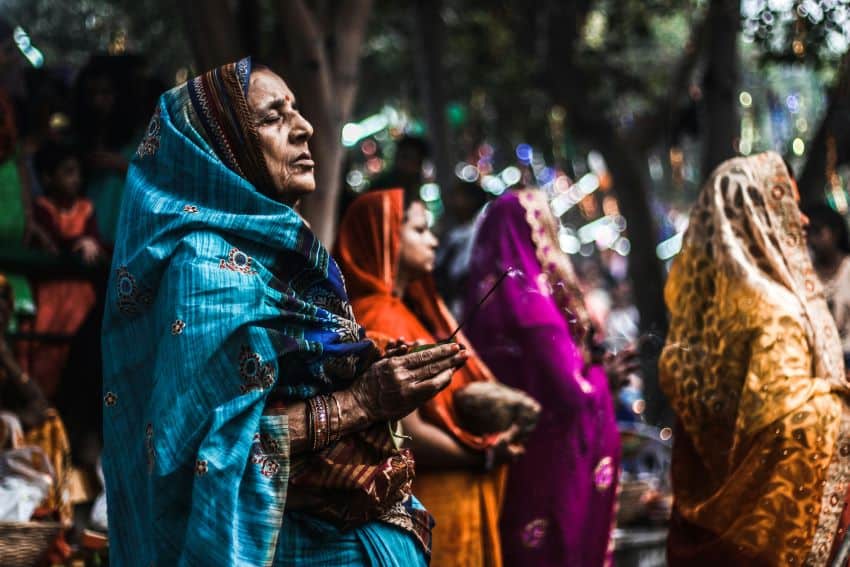Tradition, flavor and art unite the cultures of Mexico and India

When I relocated from Miami to Mexico, I was shocked at how little I knew about the culture, from religion to art to medicine.
To make sense of it all, I started inevitably comparing it to other countries. What are the quintessential elements of Mexican culture?
- Bright art and patterned textiles
- Colorful cuisine that uses a variety of chiles and spices
- A deep commitment to family and tradition
- Ancient gods and goddesses weaved into monotheistic religion
- Ancient medicinal practices with an emphasis on natural remedies
- A distinct social class system
All of which sounds like…India!
Pankaj Sharma, India’s Ambassador to Mexico, said in an interview with Mexico News Daily that “India and Mexico are two ancient civilizations that are proud of their history, culture and traditions.”
To determine the similarities between these age-old cultures, I spoke with an artist, a yoga instructor, a chef, a mushroom expert and a news media entrepreneur, MND’s very own Tamanna Bembenek.
Let’s start with art
Jane Zweiger, a visual artist from New York, has studied and exhibited all over the world. Before moving to Mexico a year and a half ago to live and paint, she spent a month with master artisans in India to study the art of Pattachitra painting.
“Both Mexican and Indian art share visual narrative, expressive figuration, attention to detail and vivid color,” Jane says, adding that “Mexican ex-voto paintings are spiritual and religious in nature, often depicting miracles and saints. Indian Pattachitra paintings depict spiritual images of multiple deities, as well as mythological beings and folklore.”
Jane’s paintings are bright, bold and symbolic, so it’s no surprise that she’s been heavily “influenced by the vibrant colors of Mexican art.” The abundance of folk art produced in both countries celebrates storytelling in a way that is clearly “spiritual but also grounded in the everyday”.
What is the “everyday” grounded in, exactly?
The role of community
According to Tamanna, it’s grounded in community.
Tamanna, who was born in India, gave me a fascinating masterclass on bold colors, spicy food, spirituality and tradition, showing me that the Mexican and Indian cultures are far more alike than they are different.
Tamanna sees a lot in Mexico that reminds her of home. Witnessing people of all ages interacting together in parks and public squares, dancing, singing and talking, brings her back to her childhood in India. The central role of relationships weaves the two cultures together and it’s common to see family and friends “spending time together, eating, socializing, [and] celebrating small to large events.”
A reverence for elders is prevalent in Mexico, as it is in India. For her, it’s comforting to watch youth speak and act respectfully towards the elderly, regardless of whether they are a member of the family, friends of the family or complete strangers.
The “everyday” is also grounded in aesthetics.
Surrounded by flora and fungi
Both Tamanna and Yosef Zur, an Ashtanga teacher based in Tulum, mentioned plants as a visual theme. In countries like the United States and Canada, where houseplants can be costly, it’s not as common to fill your home with flowers and trees. In Mexico and India, however, they’re everywhere.
“Banana trees, papaya trees, containers full of plants all around the house, on roofs…it doesn’t matter if you’re poor, you still have plants!” Yosef smiles as he describes this “desire to bring beauty to the community” as one of the common links between Mexican and Indian culture.
Plant medicine also plays a deep role in Mexican and Indian societies. India has been reliant on Ayurveda to prevent and treat various medical ailments for thousands of years, using herbs such as turmeric, cumin and triphala. In Mexico, herbs like achiote, cinnamon and oregano are often used in addition to, or in lieu of, Western medical treatments. According to Biodiversidad Mexicana, 80% of Mexico’s population uses herbs and plants as medicine and, like India, has integrated their use into its modern health system.
In the same vein, India and Mexico share the perfect microclimate and biodiversity to cultivate another medicinal staple: mushrooms. Dennis Walker, a Mexico-based mycologist and owner of Mycopreneur, states that both countries are home to “numerous identical psychoactive and medicinal mushroom species. An example of this includes Ganoderma lucidum – more popularly known as Reishi.”
And because “native tribes traditionally placed greater emphasis on oral transmission of sacred knowledge rather than written documentation,” there is still plenty to discover.
A devotion to flavor
Herbs and spices aren’t used only for treating ailments, as we know quite well living in Mexico.
Food, from its color to its communal significance, bridges an ocean’s gap between Mexico and India. Alberto Harwy, head chef of Taller Xilotl in Mexico City, says “To speak about these two cultures is to speak about strength. Both cultures are intense, ancient and full of color and smells.”
He compares mole to curry, a dish that is so widely respected in each country that it is imbibed with almost a religious reverence. Alberto and his Indian culinary partner Anshul also mention the ubiquitous presence of street food, a concept that is fundamental to city life in both countries.

Alberto mentions that the chile de árbol is a staple ingredient in both cuisines, along with spices like cumin, coriander, cloves and cinnamon. To make all these tasty dishes, Mexican and Indian cooks rely heavily on clay cookware, wooden spatulas, and mortar and pestles to grind spices and make sauces.
Moreover, food plays a significant role in the preservation of ancient traditions, specifically altars. Colorful altars can be found everywhere, from houses to street corners, and often contain edible offerings for deceased loved ones and the gods.
And to God(s)?
Both Mexico and India are known for syncretism, the incorporation of multiple religions into one. While Mexico is a largely monotheistic Catholic nation since the arrival of the Spanish in the 1500s, locals managed to weave in Indigenous rituals that honor their multiple pre-Columbian gods. Every fall, Mexico itself turns into a colorful altar of marigolds in celebration of Day of the Dead.
India is a melting pot of many religions, including Hinduism and Sikhism. Hinduism is a polytheistic belief system of sorts — there are many deities which are manifestations of one god Brahman — and Sikhism is a syncretistic blend of Hinduism and Muslim worshiping one god. Still, Diwali is a country-wide celebration of joy, light and the goddess Lakshmi, characterized for its abundance of — you’ll never guess — marigolds.
All of this feels a little mystical, doesn’t it?

There is an energy in Mexico, just like there is an energy in India, that is strong and tangible. How does it feel to visit Chichén Itzá? Varanasi? Powerful, right? These are locations deemed sacred by Indigenous cultures for their spiritual energy, and millions of visitors are lured to discover their intrigue every year.
So what’s the ultimate thread that ties together India and Mexico? You could answer this question in a variety of ways. Culture, tradition, food, art, color, spirituality, family.
If you ask my opinion, though, I’d say, it’s magic.
Bethany Platanella is a travel planner and lifestyle writer based in Mexico City. She lives for the dopamine hit that comes directly after booking a plane ticket, exploring local markets, practicing yoga and munching on fresh tortillas. Sign up to receive her Sunday Love Letters to your inbox, peruse her blog, or follow her on Instagram.
Source: Mexico News Daily

